PICK OF THE MONTH
 Various Artists
Various Artists
Legends of Old-Time Music: Fifty Years of County Records (4 discs)
County
CO-CD-6001
This four-disc retrospective is an absolute treasure trove of what is generally called “old-time” music, which is to say pre-bluegrass country music from the southern Appalachian region. Very often this means string band music (one or more fiddles, clawhammer banjo, guitar), but there are lots of solo recordings here as well and some slight anomalies like the Russell Family, whose instrumental lineup included two guitars and a mountain dulcimer. The title of this collection is apt–many of the artists featured here are indeed legends: Kyle Creed, Lily May Ledford, Tommy Jarrell, Fred Cockerham, bands like the Camp Creek Boys and the Coon Creek Girls — these are musicians who have shaped American music in ways both subtle and overt, and their playing on these recordings is consistently thrilling. As a banjo player myself I’m pleased by the degree to which that instrument takes center stage here, though some listeners might wish for more ensemble recordings (especially after hearing the Camp Creek Boys rock out on “Fortune”). But this is a brilliant collection and should be considered an essential purchase for any library with a collecting interest in traditional American music.
CLASSICAL
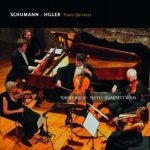 Robert Schumann; Ferdinand Hiller
Robert Schumann; Ferdinand Hiller
Piano Quintets
Tobias Koch; Pleyel Quartett Köln
Avi-Music (dist. Allegro)
8553333
For decades, the period-instrument movement has focused on the Renaissance, baroque, and classical periods–understandably enough, given that the structural and sonic differences between modern and early instruments are most dramatic there. But there is now increasing interest now playing the music of the Romantic period on instruments that are constructed and set up according to 19th-century practice, and one result is this excellent recording by the Pleyel Quartet with historical keyboardist Tobias Koch. Here Koch plays an 1860 pianoforte equipped with its original leather hammerheads and the quartet plays with period-appropriate bows and strings. The resulting sound is noticeably (if not dramatically) different from what one usually hears with this repertoire, and it’s very attractive. The playing itself is wonderful as always from this group.
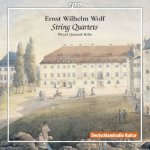 Ernst Wilhelm Wolf
Ernst Wilhelm Wolf
String Quartets
Pleyel Quartett Köln
CPO (dist. Naxos)
777 856-2
Nope, I had never heard of him either. As it turns out, Ernst Wilhelm Wolf is yet another of those prodigies and composers of the classical age, famous and sought-after in their time, whom history has nearly forgotten. Legend has it that he was recruited by Frederick the Great to succeed C.P.E. Bach at his court, but turned down the offer to stay in Weimar. Anyway, these string quartets are thoroughly enjoyable and are expertly played by the Pleyel Quartet, an ensemble that is doing much to help bring the work of neglected classical-era composers to light.
 Various Composers
Various Composers
Cantate Domino
Sistine Chapel Choir / Massimo Palombella
Deutsche Grammophon
479 5300
Rick’s Pick
This album gets a Rick’s Pick not only because the singing is sumptuously beautiful or because the program (which includes gorgeous pieces by Palestrina, Lassus, Victoria, and Allegri, along with a selection of Gregorian chants) is so well-selected, but also because it represents a historical first: this is the first studio recording of the Sistine Chapel’s resident choir, and the first recording ever made in the Sistine Chapel itself. Fittingly, the program includes the original version of Allegri’s famous Miserere, as preserved in the Sistine Codex of 1661. And how does the legendary chapel sound as a recording venue? Haunting–the acoustic is dark and quite reverberant. The singing is top-notch, and this disc offers a truly unique listening experience overall.
 Roger Sessions
Roger Sessions
Music for Violin & Piano
David Bowlin; David Holzman
Bridge
9453
Roger Sessions was probably more influential as a pedagogue than a composer, but the robust and astringent pleasures of his music shouldn’t be overlooked. Those are bountifully evident in this collection of chamber works for piano (Adagio, Waltz for Brenda, Second Sonata), for violin (Sonata for Violin) and for the two instruments together (a one-movement duet). Here we see Sessions moving from a complicated and ambivalent tonality–note in particular the gentle but knotty Waltz for Brenda–into the full-fledged duodecaphony of his notoriously difficult Sonata for Violin. Bowlin and Holzman are both masterful advocates for this music, and are beautifully recorded.
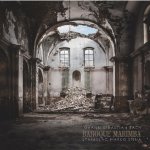 Johann Sebastian Bach; Wolfgang Amadeus Mozart
Johann Sebastian Bach; Wolfgang Amadeus Mozart
Baroque Marimba
Stanislao Marco Spina
Stone (dist. Allegro)
5060192780574
I find it fascinating that in recent years there’s been a slow but steady trickle of recordings of Bach on the marimba. The latest is this one from Italian percussionist Stanislao Marco Spina, who gives a lovely account of selections from Bach’s keyboard repertoire (including the Goldberg Variations, the partitas, and the Well-tempered Clavier) with a Mozart fantasia for dessert. The dark-hued percussive tones of the marimba provide a slightly startling sonic matrix for these familiar melodies, while the quick decay of the struck notes helps to expose the mathematical genius of Bach’s musical constructions. Spina plays with sensitivity and expressiveness as well as precision.
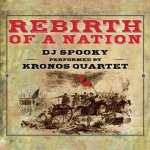 DJ Spooky; Kronos Quartet
DJ Spooky; Kronos Quartet
Rebirth of a Nation (CD + DVD)
Cantaloupe (dist. Naxos)
CA21110
I’ve always had something of a vexed relationship with DJ Spooky’s music: I love the funkiness and complexity, but am sometimes left cold by the self-conscious postmodern faddishness and the pretentious crit-theory jargoneering. (Sample song titles from his catalog: “Sequentia Absentia [Dialectical Triangulation]”; “Variation Cybernetique: Rhythmic Pataphysic,” etc.) But this project–writing the soundtrack for a video remix of the notoriously racist D.W. Griffith film Birth of a Nation–is perfect for him, and the Kronos Quartet is the perfect ensemble to collaborate with him in realizing the score. I’ll leave you to investigate its theoretical underpinnings on your own, but suffice it to say that the music is by turns dense, spiky, funky, sardonic, joyful, and contemplative, and sometimes it’s several of those things at once. Handily, the package includes a DVD of the remixed film itself.
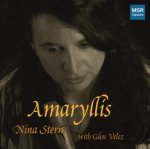 Various Composers
Various Composers
Amaryllis
Nina Stern; Glen Velez
MSR Music (dist. Albany)
MS 1577
This collection of pieces for recorder, chalumeau (early clarinet) and percussion is a highly personal one, consisting of compositions particularly beloved by recorder player/clarinetist Nina Stern. They cover a period of time from the medieval to the baroque and include pieces originally written for voice and arranged by Stern for this recording. Choosing the famous and well-regarded Glen Velez as her accompanist was an inspired touch; whether playing a Telemann fantasia, an Armenian sharakan, a recorder miniature by Jacob van Eyck, or the evergreen “Greensleeves,” Stern and Velez demonstrate both a reverence for tradition and a willingness to bend the rules if that’s what it takes to achieve a particular kind of beauty.
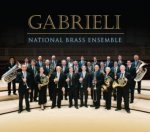 Giovanni Gabrieli; John Williams
Giovanni Gabrieli; John Williams
Gabrieli
National Brass Ensemble
Oberlin Music (dist. Naxos)
OC 15-04
Besides Monteverdi, Giovanni Gabrieli is probably the single composer most closely identified with the glory days of Venetian music and (like Monteverdi) a key figure in the stylistic transition from the Renaissance into the baroque period. Today he is most warmly remembered for his monumental compositions for brass instruments, and on this album the National Brass Ensemble (playing on modern instruments) presents a selection of pieces from Gabrieli’s beloved Sacrae Symphonia collection. Their playing is bright and joyful, and conveys the majesty of this music beautifully. Interestingly, the final work on the program is the world-première recording of John Williams’ Music for Brass, a thoroughly enjoyable piece of modern classical music that nevertheless fits rather awkwardly on this program.
JAZZ
 Gilad Hekselman
Gilad Hekselman
Homes
Jazz Village (dist. Harmonia Mundi)
JV 570058
Rick’s Pick
If you want to understand Gilad Hekselman as a composer and player of original music, listen to the first seven tracks of this, his fifth album as a leader, and notice how easily and deftly he and his trio flow from scampering bop to abstract expressionism, how they negotiate deeply tricky rhythmic shifts so fluidly that you never notice them, and how he balances beauty and complexity in his writing. To understand him as an interpreter, check out the next four tracks: Bud Powell’s skittering bop workout “Parisian Thoroughfare,” a Baden Powell samba, a Pat Metheny number, and an arrangement of Israeli songwriter Matti Caspi’s “Shir HaYonah” (“Dove Song”). On these tunes he’s like a chameleon: changing color subtly and tastefully depending on the context, but always retaining his own unique shape as a player. This is a richly beautiful album, one that should find a home in every jazz collection.
 Terri Lyne Carrington
Terri Lyne Carrington
The Mosaic Project: Love and Soul
Concord
CRE-37779-02
Drummer Terri Lyne Carrington delivers the follow-up to 2011’s The Mosaic Project with The Mosaic Project: Love and Soul. The subtitle is apt: the mood on this album is consistently smolderingly soulful, with one eye often on the bedroom, as a rotating cast of singers (including Chaka Khan, Nancy Wilson, Oleta Adams, Natalie Cole, and Carrington herself) performs songs by the likes of Duke Ellington, Bill Withers, and Ashford & Simpson alongside original Carrington compositions. She continues to show herself a masterful arranger and impresario, overseeing consistently powerful performances from this ace group of collaborators. More “jazzy” than jazz strictly speaking, this is a deeply romantic and heartfelt album.
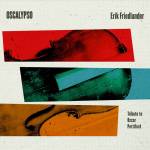 Erik Friedlander
Erik Friedlander
Oscalypso: Tribute to Oscar Pettiford
Skipstone
SSR22
Rick’s Pick
Jazz cello has a mixed history. Too many bassists seem to have assumed that a cello is pretty much just a small bass, so obviously they know how to play it, right? The results have been downright embarrassing sometimes. But Oscar Pettiford was both a world-class jazz bassist and a pioneeringly good jazz cellist (though admittedly, he did kind of cheat by tuning it like a bass). Erik Friedlander, a dedicated jazz cellist himself, pays tribute to his predecessor on this wonderful album of Pettiford compositions, including familiar tunes like “Bohemia After Dark” and “Tricotism.” He’s accompanied by saxophonist Michael Blake, bassist Trevor Dunn and drummer Michael Sarin, and you won’t even notice the lack of a chordal instrument. Invigoratingly creative but never inaccessible, this is music of great warmth, affection, humor, and swing.
 Mostly Other People Do the Killing
Mostly Other People Do the Killing
Mauch Chunk
Hot Cup
153
Have you ever eaten a jalapeño-flavored lollipop? If so, you’ll have a good idea of what to expect from the latest album from the infamous combo known as Mostly Other People Do the Killing. The grooves are happy and upbeat, the melodies sunny and sweet–and very often, alto saxophonist Jon Irabagon’s solos start out that way too before suddenly collapsing into skronky squeals and harmolodic excursions. Sweet and spicy, humorous and forbidding: that’s the MOPDtK hallmark, and while some may find it difficult, those with more adventurous ears will get a big kick out of their latest.
 Andrea Brachfeld
Andrea Brachfeld
Lotus Blossom
Jazzheads
JH1214
Rick’s Pick
Andrea Brachfeld is a flutist equally comfortable playing Latin jazz or straight-ahead swing/bop/postbop styles; her tone is consistently warm and woody, her phrasing lithe, her time impeccable. And she possesses that essential but rare trait: the ability to express herself deeply without taxing the patience of the listener. Listen, for example, to the way she jumps from the decorous abstractions of “A Flower Is a Lovesome Thing” to the skipping boppishness of “If I Love Again,” and note how her solos in both cases pay deep respect to the tunes while never letting us forget who she is. The whole album is like that, and there’s something here for just about every jazz fan.
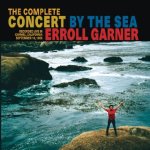 Errol Garner
Errol Garner
The Complete Concert By the Sea (reissue; 3 discs)
Columbia/Legacy
88875120842
One of the best-selling jazz albums of all time, this trio set was recorded live in 1955 as part of a concert series that would eventually turn into the Monterey Jazz Festival. This three-disc reissue features a new digital remastering and eleven tracks not previously released, and tacks a fourteen-minute interview recording onto the end for good measure. Coming back to this material, I noticed two things: first, the almost orchestral quality of Garner’s playing; he loved big, emotional gestures and played with a visceral sense of joy and enthusiasm. Second, the lousy quality of the recording itself, even with the remastering: Garner’s piano sounds like it’s coming from behind a blanket ten feet away from the mic, the bass is a constant but indistinct mutter, the drums are barely audible most of the time. But you can hear Garner’s piano well enough to appreciate the genius of his playing, and this album is an undisputed classic, so libraries would be will advised to give the reissue serious consideration.
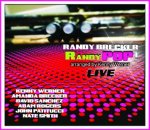 Randy Brecker
Randy Brecker
RandyPOP!
Piloo
PR009
Trumpeter Randy Brecker has always straddled the jazz and pop worlds: with his brother Michael he helped to define the sound of jazz-rock fusion in the 1970s, and prior to that he was a founding member of Blood, Sweat & Tears. Over the ensuing decades he has played on countless jazz and pop songs by others, including hits like Steely Dan’s “New Frontier,” Paul Simon’s “Late in the Evening,” and Bruce Springsteen’s “Meeting Across the River.” For this album, keyboardist Kenny Werner created new arrangements of those songs and other pop hits on which Brecker has played in the past, and together they recorded the arrangements live with a septet. The result, as one might imagine, is tons of fun. Brecker’s chops are as mighty as ever, and the band is watertight.
FOLK/COUNTRY
 Mark and Maggie O’Connor
Mark and Maggie O’Connor
Duo
Omac (dist. Allegro)
OMAC-21
Fiddle legend Mark O’Connor and his wife Maggie have created a lovely album that doubles as a master class in arrangement and a pure listening experience of the highest quality. They’ve taken an assortment of familiar tunes from a variety of American traditions including bluegrass (“Gold Rush,” “Jerusalem Ridge”), Cajun (“Jolie Blon'”), traditional jazz (“Tiger Rag”), and country (“Faded Love”) and created unaccompanied twin-fiddle arrangements for them that are sometimes elegantly sophisticated and sometimes barn-burningly straightforward, but always either moving or exciting. Their playing is offhandedly virtuosic, but they never succumb to the temptation to show off their chops for selfish reasons.
 Duke Robillard
Duke Robillard
The Acoustic Blues & Roots of Duke Robillard
Stony Plain
SPCD 1383
You may think of Duke Robillard mainly as a hero of the East Coast R&B scene (appropriately enough, given his founding membership in Roomful of Blues and his subsequent gig with the Fabulous Thunderbirds), but his roots go much deeper than that, as evidenced by this very fine collection of traditional blues and country songs by the likes of Stephen Foster, Hank Williams, Jimmie Rodgers, W.C. Handy, and Sleepy John Estes (along with some old-school-style Duke originals and a few more recent numbers). The arrangements are acoustic, the playing is appropriately greasy and rich, and the songs themselves are excellent. Strongly recommended.
 Jenna Moynihan
Jenna Moynihan
Woven
Self-released
No cat. no.
Rick’s Pick
Listening to this stunning album by fiddler Jenna Moynihan, I kept trying to figure out who it is that her playing reminds me of–and then it hit me: in her combination of sharp musical insight, no-worries technical facility, and focus on the guts of each tune, she reminds me strongly of Martin Hayes, who has been my favorite Irish fiddler for close to 20 years now. Her sound is different in significant ways, and her musical mind is entirely her own, but listen to how delicately but powerfully she dissects a tune like “Pipe Major Jimmy MacGregor” and to what she does when challenged to write an original melody in an unusual tuning (and then records herself playing it with Darol Anger). The fact that Moynihan plays a five-string fiddle means that she’s able to employ unusual drone techniques that sometimes give her playing a faintly Scandinavian air. There are sweet and gentle surprises around every corner of this remarkable album. Here’s hoping for more very soon from this impressive artist.
ROCK/POP
Note: For some reason, the past few months have seen a bumper crop of interesting and often very beautiful takes on the ambient music tradition emerge from the new-release books, and a whole bunch of them have landed on my desk and in my inbox. At first I wondered how I was going to cover more than a couple of these releases without raising readers’ eyebrows–and then I decided, dang it, this is my CD HotList and I can cover whatever I want. So this month, I’m turning over the entire Rock/Pop section to one subgenre of popular music. It probably won’t happen again, but who knows?
 Lee Ranaldo
Lee Ranaldo
Ambient Loop for Vancouver
Important
IMPREC088
Rick’s Pick
Lee Ranaldo is most famous as a former member of Sonic Youth, but his avant-garde bona fides extend much deeper than that. This particular album documents a project with photographer Leah Singer; together they wrote a book of prose (his) and photographs (hers) titled Road Movies, and Ranaldo composed an hour-long loop of abstract guitar sounds as an accompaniment. This is ambient music in the wind-chimes mode: everything is consonant, tones repeat quite a bit, and there’s nothing like a chord progression. But it’s not all pleasant shiny surfaces: there are strange buzzes and whines popping in and out of the mix and occasional incursions of feedback. Nevertheless, the listening experience is very relaxing and contemplative overall. (And despite what their website says about this album being sold out, my contacts at the Important label tell me that there are still plenty of copies available.)
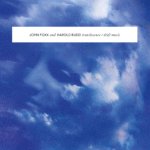 John Foxx and Harold Budd
John Foxx and Harold Budd
Translucence & Drift Music (reissue; 2 discs)
Metamatic (dist. Forced Exposure)
META 042
Rick’s Pick
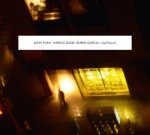 John Foxx; Harold Budd; Ruben Garcia
John Foxx; Harold Budd; Ruben Garcia
Nighthawks (reissue)
Metamatic (dist. Forced Exposure)
META 055
Rick’s Pick
And here is where we have to start pondering the intersection of ambient and minimal music. What separates them? Can you define one in a way that systematically excludes the other? (And if so, is it useful to do so?) These three reissued albums are examples of the particular kind of shimmering, echo-laden, deceptively simple-sounding (and occasionally genuinely simple) ambient music of which Harold Budd has been a leading exponent for decades. On Translucence Budd’s piano is subjected to extreme reverb and echo in the studio; on Drift Music Foxx himself contributes more of the music, in the form of synthesizer washes. Nighthawks is something of a tribute to a less well-known exponent of ambient music, composer Ruben Garcia. All of the pieces presented on these three albums are immediately accessible but also reward close listening, which is the hallmark of the best music in this genre.
 Chris Walla
Chris Walla
Tape Loops
Trans- (dist. Redeye)
013
Rick’s Pick
Chris Walla’s take on the ambient concept is pianistic like Harold Budd’s (though he’s mainly a guitarist, known primarily for his years with Death Cab for Cutie), and it uses tape loops like Ranaldo’s does, but it sounds very different from either one. Where Budd’s arrangements are lushly reverberent, Walla places his simple melodies in sonic jewel-boxes of subtle echo; where Ranaldo drops many different voices into his ambient mix, Walla keeps the elements (as well as the melodies) minimal. I can’t figure out why the resulting music is so deeply affecting, but don’t be surprised if it moves you to tears. It’s truly gorgeous.
 Multicast Dynamics
Multicast Dynamics
Scandinavia
Denovali (dist. Nail)
DEN-245
Ambient music comes in lots of different categories, and this one fits what I call the Brooding and Ominous category (sometimes referred to as “Dark Ambient” in the promotional literature). Samuel van Dijk, recording as Multicast Dynamics, is a Dutch producer and sound designer whose latest album is the third in a series of programmatic releases that (quoting from the one-sheet here) “(move) from an evolutionary to a cosmological scale: starting from dry land filled with light and and streams, to the constantly changing surfaces of the oceans, into a frozen and murky underwater world, finally up to the arrival in an interstellar space and the cosmos.” The controlling concepts here are ice, space, and slow movement; the mood is dark and quiet, but the sonic space that van Dijk creates is filled with tiny details. This isn’t mood music for a romantic dinner, but it makes a great accompaniment to reading a crime novel.
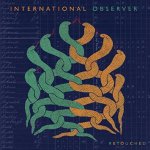 International Observer
International Observer
Retouched (compilation)
Dubmission (dist. Nail)
CDDUBM053
Rick’s Pick
Dub is arguably the ambient counterpart to the reggae music on which it’s usually based. Thom Bailey (better known as the founder of 1980s hitmakers the Thompson Twins) has been an avid exponent of dub since that band broke up and he and fellow TT vocalist Alannah Currie formed the short-lived Babble. In recent years Bailey has been releasing instrumental dub albums under the name International Observer, and on Retouched he collects a bunch of dubwise remixes he’s done for other artists under that name. Here you’ll find his treatments of tracks by Pitch Black, Bic Runga, stellar*, Holiwater Band, and others, and perhaps most noteworthy is the first dub mix he ever created: a remix of Babble’s “Love Has No Name.” Five of the album’s ten tracks are previously unreleased, and two have never before been available outside of Bailey’s native New Zealand. While this album isn’t ambient music per se (the grooves are beat-driven throughout) its spacey textures, generally soft-focus atmospheres, and complete disregard for conventional song structure make it a very nice complement to the more abstract albums featured here this month.
WORLD/ETHNIC
 Gurdjieff Ensemble
Gurdjieff Ensemble
Komitas
ECM
2451
The Gurdjieff Ensemble was formed in 2008 to explore the inspirational sources of the music written by the esoteric Russian spiritual teacher George I. Gurdjieff, using Armenian folk instruments. On this album, however, the group performs arrangements of songs written by the celebrated Armenian songwriter Komitas Vardapet. Vardapet’s works seek to blend folk tradition with Western classical compositional technique, and the result is music that is by turns eerily and astringently modal, ceremonially grand, and mystical. These are sounds that will be unfamiliar to many American ears, but will grab any listener at a deep and visceral level. (In 2016 a companion release is planned, this one featuring Vardapet’s music for piano.)
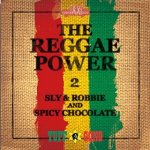 Sly & Robbie and Spicy Chocolate
Sly & Robbie and Spicy Chocolate
The Reggae Power 2
Tuff Gong/Taxi
No cat. no.
The legendary drums/bass/production duo of Sly Dunbar and Robbie Shakespeare has put together a solid collection of modern reggae tracks in collaboration with Japanese band Spicy Chocolate. Featuring an assortment of A-list singers and chatters including Beenie Man, Shaggy, Richie Spice, and up-and-coming neo-rootsman Romain Virgo. To be clear, this album is no one-rhythm exercise, nor is it a collection of recycled material or re-voicings of old reggae rhythms; it’s a top-notch compilation of new songs in a rootsy but modern style, underpinned by what is arguably the finest existing rhythm section in reggae music. Every library with a collecting interest in reggae music (or in pop music generally) needs to own this album.
 Ravi & Anoushka Shankar
Ravi & Anoushka Shankar
Live in Bangalore (2 CDs + 1 DVD)
East Meets West (dist. Harmonia Mundi)
EMWM1014
This set documents Ravi Shankar’s final Indian performance before his death in 2012. He was almost 92 years old when this concert took place, and he performed alongside his daughter Anoushka (with various accompanists) for over three hours. Listening now, it’s hard to believe that he was so old–put this album alongside his performances at the peak of his powers (and worldwide popularity) in the 1960s, and you will probably notice a difference in his speed and dexterity, but his melodic inventiveness and bone-deep understanding of the raga form have only grown over time. As important as this package is as a historical document, it is also a marvelous listening experience. (The accompanying DVD documents a solo performance by Anoushka, herself an acknowledged sitar master.)
 Shujaat Husain Khan; Katayoun Goudarzi
Shujaat Husain Khan; Katayoun Goudarzi
Ruby
Self-released
No cat. no.
Rick’s Pick
This one narrowly missed being the “Pick of the Month” for November; it is easily one of the five best albums I’ve heard this year. Ruby is a collaboration between Indian sitarist Shujaat Husain Khan and Iranian singer Katayoun Goudarzi. Those who are paying attention may wonder where two musicians from such disparate backgrounds might be able to find common ground, and in this case the answer is in the work of Rumi, the great Persian poet. Together Khan and Goudarzi created musical settings for a selection of Rumi’s poems, and with the help of several additional musicians (notably the gorgeous bansuri playing of Ajay Prasanna) they have made a record that is deeply, richly beautiful. I can’t think of a library that would not benefit from adding this album to its collection. (Note: the link above leads to a digital download, but the album will also be available in CD format after November 6.)
 Ballaké Sissoko & Vincent Segal
Ballaké Sissoko & Vincent Segal
Musique de nuit
Six Degrees
657036-1228-2-6
Rick’s Pick
This is the second duo album by kora virtuoso Ballaké Sissoko and cellist Vincent Segal, and it finds the two picking up the musical conversation of Chamber Music pretty much where it left off six years ago. Several of the tracks on Musique de nuit were recorded on a rooftop in Bamako, the capital of Mali, and if you listen closely you’ll hear incidental noises from nightbirds singing or people passing by on the street below. But mostly, all you’ll hear is the remarkable interplay between two masters of their instruments who come from musical traditions that could hardly be more remote from each other, finding and exploring common musical ground in beautiful and moving ways. The song “Diabaro” features griot singer Babani Kone. All of it is exceptionally lovely.